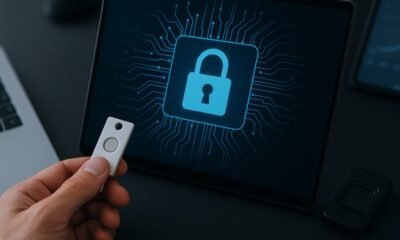Tech
Essential Ways to Protect Against Data Breaches

Image by Pete Linforth from Pixabay
Data breaches have become a significant threat to businesses and individuals alike. The unauthorized access, theft, or leakage of sensitive information can result in financial loss, reputational damage, and legal consequences. Protecting against data breaches requires a comprehensive approach, combining technology, policies, and best practices. Learn more here.
1. Implement Strong Password Policies
Passwords are the first line of defense against unauthorized access. Implementing strong password policies is crucial. Encourage using complex passwords that include a mix of letters, numbers, and special characters. Avoid using easily guessable information such as birthdays or common words. Regularly update passwords and discourage the reuse of old passwords.
2. Enable Multi-Factor Authentication (MFA)
Multi-factor authentication (MFA) gives an extra security layer by requiring users to provide two or more verification factors to get access to a system. This could be something that they know, like a password, something that they have, like a mobile device, or something they are, like a fingerprint. MFA significantly reduces the risk of unauthorized access, even if passwords are compromised. This falls under identity and access management. Read more about the definition of identity management here.
3. Keep Software Updated
Software vulnerabilities are a common place for hackers to get in. Regularly updating software ensures that known vulnerabilities are patched and that the latest security features are in place. This includes operating systems, applications, and any other software used within your network. Enable automatic updates wherever possible to ensure timely installations.
4. Use Encryption
Encryption puts data into a coded format that can only be accessed with the right decryption key. Encrypt sensitive data both at rest (stored data) and in transit (data being transmitted). This makes sure that even if data is intercepted or accessed by an unauthorized source, it remains unreadable and unusable.
5. Regularly Back Up Data
Regular data backups are important for recovering information in the event of a breach, ransomware attack, or system failure. Ensure that backups are stored securely, preferably in an offsite location or in the cloud, and test them regularly to confirm that they can be restored successfully. Put a backup schedule in place that aligns with your organization’s needs and data retention policies.
6. Educate and Train Employees
Humans are the cause of many breaches. Carry out regular training sessions to educate employees about how important data security is and the role they play in protecting sensitive information. Topics should include recognizing phishing attempts, creating strong passwords, and safe internet practices. Promote a culture of security awareness throughout the entire organization.
7. Deploy Firewalls and Anti-Malware Software
Firewalls are a barrier between your network and threats, monitoring incoming and outgoing traffic based on predetermined security rules. Complement firewalls with anti-malware software to detect and get rid of malicious software such as viruses, worms, and spyware. Ensure these tools are kept up-to-date to defend against the latest threats.
8. Monitor and Audit Systems
Monitoring and auditing of systems help detect suspicious activity and potential security breaches early. Implement intrusion detection systems (IDS) and intrusion prevention systems (IPS) to continuously monitor network traffic for unusual patterns. Carry out regular security audits and vulnerability assessments to identify and address weaknesses.
9. Develop an Incident Response Plan
Despite best efforts, breaches can still occur. Having an incident response plan in place ensures that your organization can respond quickly and effectively. The plan should outline the steps to be taken if a breach happens, which include identifying the source, containing the breach, notifying affected parties, and restoring systems. Regularly review and update the plan to move with evolving threats.
10. Limit Access to Sensitive Information
Not all employees need access to all of the data you have. Put in place the principle of least privilege, granting access only to the information and systems necessary for individuals to perform their job duties. Regularly review and adjust access controls to ensure they remain appropriate.
-

 Quotes3 years ago
Quotes3 years ago53 Motivational Gym Quotes to Fuel Your Workout
-

 Quotes10 years ago
Quotes10 years ago50 Most Powerful Quotes Ever Spoken
-

 Motivation5 years ago
Motivation5 years ago4 Fun New Hobbies To Try This Year
-

 Quotes3 weeks ago
Quotes3 weeks ago100 Motivational Quotes to Inspire You in 2026
-

 Quotes2 years ago
Quotes2 years ago43 Inspirational Quotes About Thoughts
-

 Quotes3 years ago
Quotes3 years ago105 Motivational Quotes by Famous People
-

 Education1 year ago
Education1 year agoHow to Motivate Yourself to Study: 6 Proven Techniques
-

 Quotes1 year ago
Quotes1 year ago77 Morning Motivational Quotes to Kickstart Your Day































